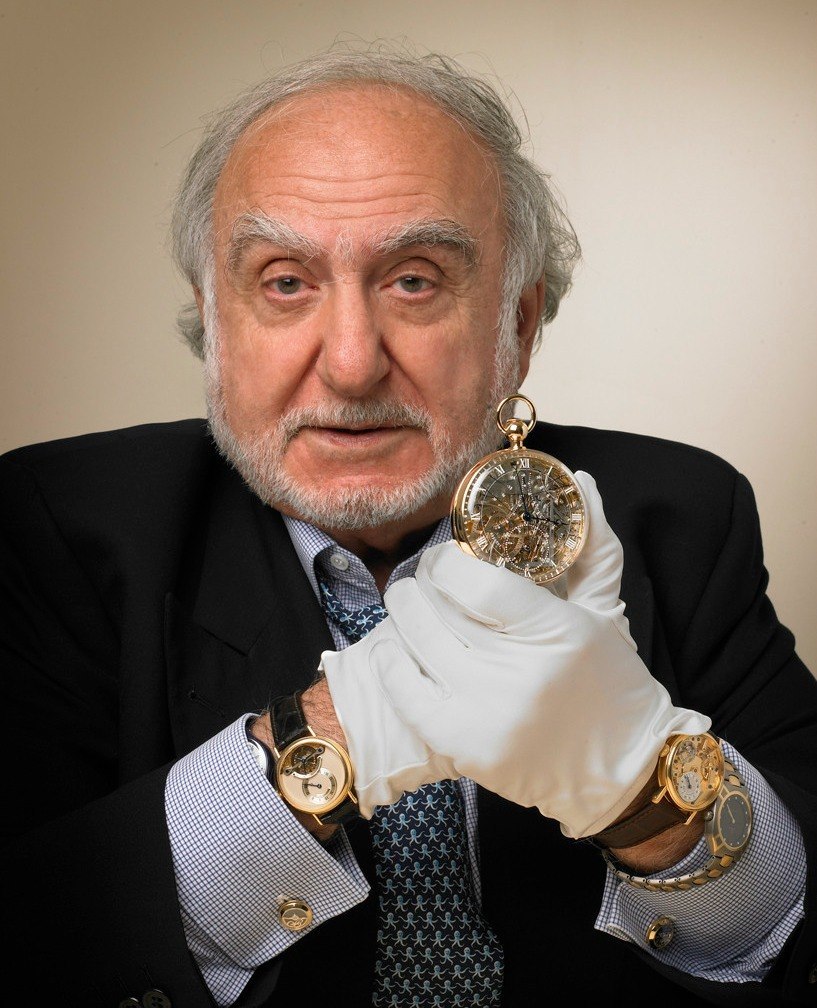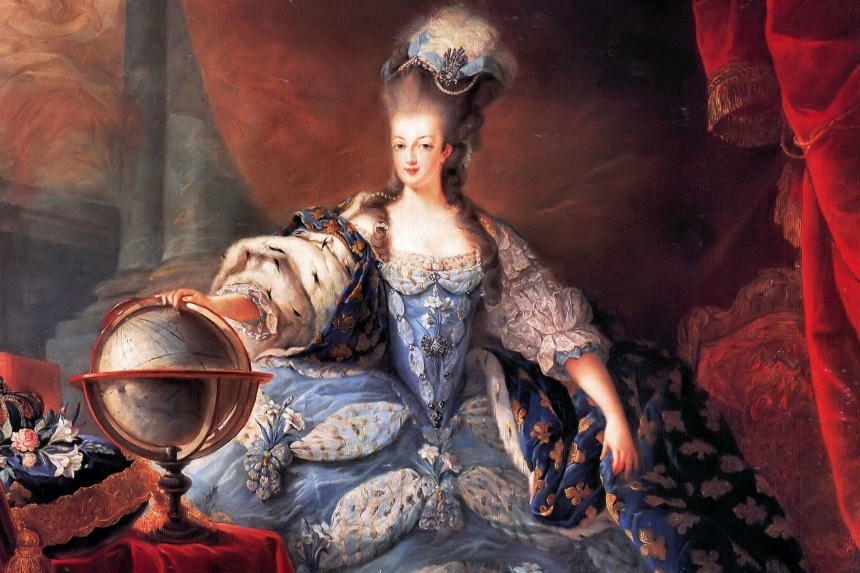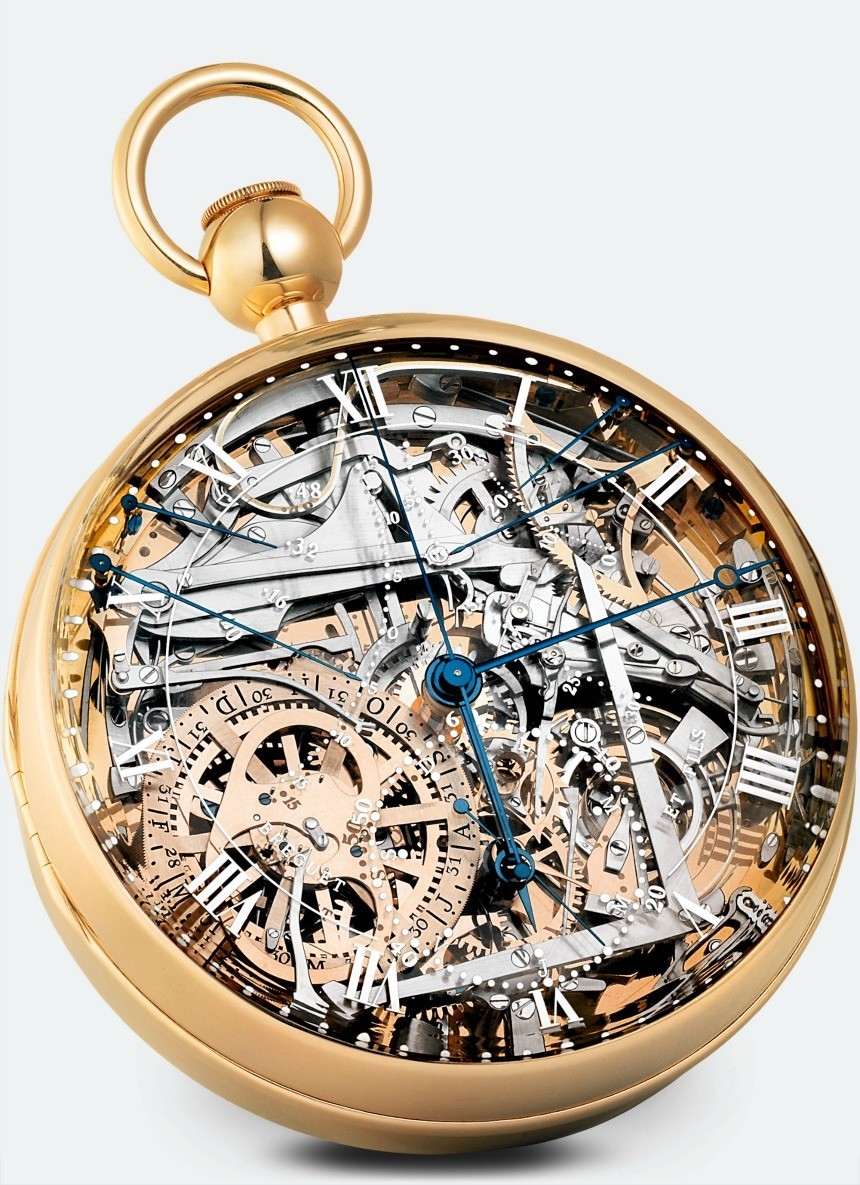 Hi, I’m John Biggs, East Coast Editor of TechCrunch, Ariel’s partner on the HourTime Show, and owner of WristWatchReview.com. I’d like to share a chapter from my new book Marie Antoinette’s Watch (now available in e-book and paperback) with you. It’s one of the greatest stories in the watch world – and one of the saddest. Commissioned in 1782, reportedly by one of Marie Antoinette’s lovers, the watch took decades to complete and had over twenty complications. It was an horological miracle at the time and it was essentially a library of all of Breguet’s amazing mechanical tricks and techniques. Also, I am giving away three signed copies of the book, so comment below for a chance to win one.
Hi, I’m John Biggs, East Coast Editor of TechCrunch, Ariel’s partner on the HourTime Show, and owner of WristWatchReview.com. I’d like to share a chapter from my new book Marie Antoinette’s Watch (now available in e-book and paperback) with you. It’s one of the greatest stories in the watch world – and one of the saddest. Commissioned in 1782, reportedly by one of Marie Antoinette’s lovers, the watch took decades to complete and had over twenty complications. It was an horological miracle at the time and it was essentially a library of all of Breguet’s amazing mechanical tricks and techniques. Also, I am giving away three signed copies of the book, so comment below for a chance to win one.
Everyone involved its manufacture died before it was completed and the watch itself moved from pocket to pocket until it disappeared in 1983 during a bold robbery at the L.A. Mayer Museum in Jerusalem. I researched the whole story – from its creation to its theft to its eventual recovery – and I’m ready to share it with you.
Writing Marie Antoinette’s Watch was a labor of love. I started this book in 2006 and finished it in about 2010. The version I’ve just released took another five years to complete and it took me another few months to find a publishing partner. It was, friends, a living hell. Now, however, it’s done. Enjoy this excerpt, check out the book here and let me know what you think:

At the end of a long and languorous summer in 1782, horological legend records that a small carriage painted in enamel the color of pitch, with brightly colored red wheels, rattled onto the Quai de l’Horloge. The coachman yanked his reins, a pair of horses pulled up short in front of #51, and a man stepped out of the hack behind them.
Above him, smoke puffed from the buildings’ chimneys, bearing away byproducts of the metalwork taking place inside. A deeply canted roof ended in three wide windows along the roofline, and at street level a front casement window was inset under a large sign: Breguet. Behind the glass, the delicate timepieces on display were brilliant in the fading sunlight, a dozen captured stars. Fersen had decided to commission a gift to the woman he loved. Given her taste for elegant understatement, he knew that a watch by Breguet, with its lack of exterior ornamentation, would perfectly suit her. He sent a letter requesting the piece, and now, with a bit of time to spare in Paris, he had come to place the order. Fersen walked into the cool of Breguet’s shop and heard the sharp ting-ting of hammers and the rasp of files in the attic atelier above. The air down below was clean and clear. The front windows faced the river, and behind the building the Place Dauphine kept the homes open and bright rather than cramped and tubercular. The rich wood of the showroom shone even in the low light, layers of wax and polish reflecting the sun from outside. This was the shop of a successful man, quiet and warm on the bottom floor and hive-ish with activity in the upstairs workshop. Fersen, like his fellow officers, was well acquainted with Breguet and his ability to make watches that could survive war, water, and even short drops. Over the years, he had commissioned many watches from Breguet and also had several watches repaired by him. One, a silver soldier’s watch, had accompanied him to the New World and returned still running as soundly as the day it had left the bench. He also knew that the understated styling of Breguet’s timepieces were exquisite and that the little watchmaker was pushing the state of the art forward with astounding regularity.
A few weeks earlier, he had seen a Breguet watch with a large white face and Breguet’s trademark blued “moon” or “Poppy” hands— a circle interrupting the long, thin hand at the tip and culminating in a sharp point. While other manufacturers clad their watches in jeweled cases that were more pomp than function, this watch was different. The Roman numerals were thin and precise, and the movement was perpetual – or automatic — meaning it wound with the motion of the wearer’s body. It even had a hand showing how much power it had in reserve — a reserve d’ marche — and, in addition, could chime the time to the nearest minute. The watch hid its movement and many complications in a case as simple and elegant as the owner herself — Marie-Antoinette, whom Fersen knew to be much more modest in her tastes than her popular reputation would have suggested. Although rumors circulated that she traipsed through private rooms with floors paved in rubies and diamonds, he knew that she loved the understated work of his favorite watchmaker. The tide of fashion was changing, and she appreciated Breguet’s subtle elegance, his way with dark and light, his sense of space and proportion.

None of Breguet’s watches were particularly ornate. Instead, each gold or silver case was as sensuous as an August peach, but with a certain hard, diamond edge it was rare to find in an era of curlicues, cupids, and insipid rococo design. Fersen knew that here he would not find watches covered in diamonds or enameled in delicate pinks or blues. Not that the proprietor would turn down a commission if it came in the door — he had executed plenty of designs that would have matched any one of the Sun king’s bejeweled antiques — but on the whole each one of these watches, signed Breguet a Paris, was a self-contained wonder, free of extraneous pomp and fuss. However impressive the watch Fersen had seen on the queen, he had come to Breguet’s shop today to place an even more ambitious order.
Inside Breguet’s shop, an unassuming Frenchman, tidying himself and hiding away his leather smock as the visitor entered, greeted Fersen and invited him further into the showroom. Their conversation would be private. The Frenchman introduced himself as Michel Weber, a new assistant, and went away to inform the master of his guest. Shortly, Weber returned and led Fersen up the cramped stairs to the master’s workshop, and between two rows of watchmakers. Each man sat at a small bench with a wide surface on which to assemble the tiny pieces, their mise en place of precise tools arrayed in front of them and carried with them in leather pouches. The backs of the benches were low enough to maximize daylight on the work surface and to encourage proper posture. Nine drawers, of increasing size, flanked each side of the watchmaker’s legs, and there were three smaller drawers and a pigeonhole to keep papers and personal items. Goldsmiths in the shop usually had a wide leather apron over their laps that was connected to the bench itself. The floor consisted of wooden slats suspended about an inch from another smooth layer of wood.
The floor was specially designed for jewelry manufacturing; it made for easy cleaning, and was swept often to ensure that no gold scraps made it out on the soles of the workers’ shoes. It also offered a measure of safety when transporting tiny gears or screws from one bench to another. Chainsmiths were the fabriquers most likely to receive new benches during the year. They would slowly chip through the front edge of their workspaces while pressing tiny chains together; benches could become so warped and worn that the watchmaker had hardly anywhere to rest his elbows. The tinging of hammers was louder here – a few men were making chains, the links falling into place like drops of liquid gold — and light from the outside was augmented by oil lamps that left dull smudges on the ceiling. Each worker had arrayed before him a collection of files, punches, and polishing cloths so thin that many looked as if they were spun from metallic silk. These were the standard tools of the horologist’s art, the files and scrapers and polishers that turned lifeless metal into ticking, whirring complications. Someone along the far wall was polishing a set of gears with a delicately carved piece of wood, while another was using a buffer – a wheel attached to a treadle – to spin a piece of brass to a fine sheen.
This sort of work was rarely done outside of the Quai, and it was the end of a long and complex process that began in the metal mines of Germany and Switzerland and ended here in a workshop high above the Seine. Breguet used more than a thousand different tools to finish a single watch, including drills, pantographs, and milling machines to create perfect circles and notch out gears and wheels with absolute precision. One machine was designed specifically for the placement of holes into tiny disks. A drill was connected to a pantograph that traced a large disk. The watchmaker would then press down on the drill, making a hole in exactly the right place based on the larger pattern. To a layman, the machines were baffling. One, a Rose Engine, also called Guilloche after its supposed inventor, was designed to place repeating patterns on a disk of gold or brass. It was used to decorate fine movements and to hide imperfections in lesser, unpolished movements.
The device consisted of a large treadle wheel connected to a set of disks. As the disks spun, they moved the engraving tip onto and off of the metal, nipping off minute shavings and dropping them into a collection container. The machines were quite sought after. These machines used almost every material imaginable, including hand hewn and joined wood as well as cast steel, brass, and even a bit of rubber in later years. But each of these machines worked in concert to create standard sized watches for almost all of the company’s cases. For example, Breguet created a series of guidelines for ebauche makers, requiring them to supply watches with parts “exactly proportional to the model” in question. In this way, each Breguet watch would bear the same hallmarks including similar hands, keys, and crystals. Abraham-Louis Breguet turned toward Fersen and smiled in recognition. When he spoke his welcome, it was with the barest hint of a Swiss accent. He presented a copy of the commission along with some preliminary drawings.
They got down to business. Fersen explained that he wanted to place a special order but could not pay for it for until he returned to Paris or until it was complete. Although Fersen barely had the money for a regular, plainer watch at Breguet’s shop, he felt that his future was secure enough and the commission odd enough to warrant the watchmaker’s interest. If all went well in the coming months, he’d return from America with enough money and stature to stay in Paris indefinitely and pay for the watch.

As Fersen and Breguet talked, Weber, the assistant, took notes. Fersen wanted something magnificent and as complicated as it could be without overwhelming the owner. It needed to be simple to operate but internally complex, and it had to be finished over the next few years, while Fersen was away tending to business. It pleased him to know that something he left here would be ticking away, slowly gaining form, until his return when he could hand the watch to the lady herself.
Breguet, just then, was hard at work on a number of improvements to the standard pocket watch, and he was intrigued by Fersen’s desire for “magnificence.” He had already sketched out a possible solution on a sheet of paper, his scratching and scribbles outlining a fairly staid and standard watch. Because Breguet had already defined, planned, and built many of the complications that made a modern watch magnificent it would not be hard to make a list of complications and build them. But to hide them all within a single woman’s watch and have all of the disparate pieces work together in concert was another matter entirely.
Working mostly alone, Breguet had created a number of inventions that were now commonplace in watches. He could have simply copied one of his favorite perpetuelles and enrobed it in a finer case. But Breguet was a perfectionist and never made the same watch twice. Each bore a unique number and was designed to order — a service that limited his market mainly to aristocrats who often couldn’t or wouldn’t pay for the finished watches when they received them. This, if anything, was Breguet’s failing: the refusal to turn down a fascinating and potentially lucrative commission. Breguet crumpled up his original notes and began anew. Fersen continued: The watch he now envisioned, he explained to Breguet, would incorporate everything the man had to offer.
Fersen knew of watches that could tell the solar time; Breguet nodded. He wanted it to chime the hours and the quarter hours; again, this could be done. He wanted a thermometer — difficult, but not impossible. A perpetual calendar that would never have to be reset? Very difficult, indeed. And this was to be a lady’s watch, so it had to be clad in gold and be appropriate for a woman of stature, beauty, and importance. It had to be delicate yet still contain all of the technology known at that time.
It was a tall order, and Breguet paused for a moment to think. He consulted his ledger, in which he kept descriptions of every watch he had ever built. Nothing remotely like this new watch appeared there except for watch number 57, a unique timepiece which he was in the midst of creating for the Duc de Praslin, one of his patrons, and which contained a few of the features Fersen was describing. Breguet could use the base of the 57 and then build on it, fitting new complications in like pieces of an ornate puzzle.
Breguet inquired as to who was to receive the gold watch. Fersen took a deep breath. While the king was seemingly oblivious to his wife’s affair, Fersen had some sense of the gossip that was circulating, and knew that anything that connected him to her could put their careers — and lives — in jeopardy. He needed a watchmaker who could keep his secrets safe, and his relationship with Breguet was close and professional. He knew he could trust the small, genial watchmaker with his commission.
Fersen answered in five curt syllables. Marie-Antoinette. Breguet nodded slowly, understanding the significance of this momentous commission. He had heard the rumors about Fersen and the queen, the chitchat about her pregnancy, the calumnies suggesting that her husband, now “very fat and even more unattractive,” could not possibly be the father. Ironically, Louis XVI, as much as anyone, would have appreciated the mechanical artistry of the watch that was being commissioned.
Watches symbolized love. Marie-Antoinette herself had recently commissioned a watch for Fersen with a blue enamel case and the letters A.F. boldly intertwined on the face. She had made a similar watch for herself, described in Breguet’s fastidious ledgers. But this commission was something else entirely, a new sort of watch for a secret love.
Carefully, on a faintly lined page in the leather-bound order book, Weber entered the specifications in a handsome French cursive: [One watch] “with the condition that all the complications possible and known be incorporated in it. Everywhere, gold must completely replace brass. No limit on time of manufacture or on price was imposed.” The name of the commissioner and the name of the intended was left blank. It would be a testament to Breguet’s skill, this watch, and the culmination of centuries of timekeeping, a technological marvel in an age where technology was just becoming a true art. And it would be a symbol, like so many watches before it, of true love.
For a chance to win one of three signed copies of the book please comment below (and make sure we can find you and contact you via social media) and mention a part of watch making history or a particular era that you are interested in and why.

